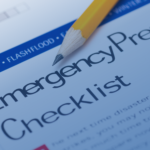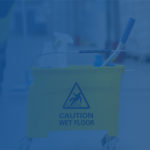Emergency Preparedness For Retailers
Steps To Prepare and Recover From HurricanesWith the hurricane season right around the corner, large-scale retailers are faced with the threat of damage to their stores that are in the potential path of coming storms. Having an effective emergency preparedness plan in place is critical to making sure that you can resume operations quickly, efficiently, and without paying premium prices for emergency cleanup services.
Emergency Preparedness: Learning from Experience
Hurricane Harvey in 2017 taught us a lot of lessons about the importance of having a hurricane preparedness plan in place. The Houston area was left with over 8 million cubic yards of debris, and the cleanup effort alone took months. Businesses faced issues from availability to pricing when it came to securing the services they needed to get cleanup underway, and those businesses learned some valuable insight as to why emergency preparedness plans are so important. When you look at the damage that a storm like Harvey created, there were retailers that lost entire regions of stores. The more locations you have, the more complex and emergency preparation plan becomes. Below is a list of why having such a plan matters, what you can do to be prepared, and how 1GNITE can help you get there.
Why having an Emergency Preparedness Plan Matters:
1. Availability
In the projected path of a major storm, the availability of things like window boarding and dumpsters will be extremely limited. When you’re talking about the potential for widespread damages, every business and every household in that area will be competing for resources that are already limited.
2. Pricing
Because of limited availability, pricing will be at a premium level for all services and materials associated with disaster recovery. Lumber prices are already very high, imagine what they are going to be like in the wake of a hurricane. Things like dumpster rentals are also going to be more expensive. Emergency situations will always generate emergency pricing if you’re not prepared.
3. Efficiency
Having a plan means you’re not scrambling after a storm and can get back up and running fast. This includes having a list of vendors ready, materials pre-staged, and a plan in place to take the steps you need to get your business cleaned up and reopened. Developing an emergency recovery plan for your locations that fall in the path of potentially damaging storms means getting back to normal operations faster. Every day your stores are closed is another day multiple stores are losing money – so efficiency plays a huge role in keeping disaster recovery losses down.
What To Do To Prepare For A Disaster:
To address each one of the reasons why disaster preparedness matters, there are steps to take to address the challenges of availability, pricing, and efficiency.
1. Establish What You Need
With the concern of availability in mind, one of the first things a large-scale retailer needs to do is get an idea of what each location will need in the event of a disaster. Things like measuring your storefront windows to order new glass if it is needed or finding out what size window boards you need before a storm is on its way is the only way to ensure your stores will have materials to protect windows when you need them.
2. Get a Dedicated List of Vendors for Each Step of the Process
Having the right vendors in place before a disaster strikes is the only way to make sure your locations don’t end up at the bottom of the list when their services are needed. Once you established the vendors your stores need, prioritize those vendors:
- Group 1: Any vendor that is critical to business operations. Trash, Utilities, Suppliers, etc.
- Group 2: Any company that needs access to when they are needed. The computer service company, refrigeration repair, etc.
- Group 3: Any companies that aren’t critical to business continuity. These would be services like a uniform or linens company.
When considering these vendors, it is important to ask the following questions:
- Are they going to be affected by the same storm you’re preparing for?
- Do they have a continuity plan?
- Is there an alternative vendor in case they can’t fulfill their purpose?
All these factors are things that need to be addressed before you are scrambling to recover from a storm. These vendors play an important role in your day-to-day operations as it is – after an event like a hurricane, they become absolutely critical.
3. Set Standard Scopes of Work
As you start to organize all this information, you’ll find that a lot of your locations have similar attributes. Things like standard window sizes and interior layouts are very common in large-scale retail stores. To avoid premium, and emergency pricing hikes – work with your vendors to establish standard scopes of work and standard pricing. For instance, if you have stores that have the same size windows (or close to it), work with your vendor to establish a set price for the boarding of those windows. This way, if the storm changes paths, you can have an idea of what storm prep in another area is going to cost. This saves you time and money by reducing the chance of overspending.
4. Pre-stage Materials
One of the most important things a retail store can do is to pre-stage materials that they KNOW they will need in the event of a storm. For instance, once you have measured your windows – purchase the plywood that you’ll need to board up your windows and keep the boards in the back of the store. Also, work with your dumpster vendors to see if you can stage additional dumpsters behind your store to use for clean-up after a storm. This way you’re not trying to purchase boarding once it becomes unavailable or trying to get dumpsters brought in when roads are cluttered with storm debris.
5. Take Care of your Employees
The main focus of emergency preparedness should always include making sure that your employees are safe. Have a plan that includes making sure that your employees have plenty of time to secure your retail locations and secure their families. Make sure you have things like extra water, batteries, flashlights, and first aid supplies stocked up in case your employees have to ride out a storm like a tornado on-site. Also, make sure your employees have all of the information they need to track and monitor potential storms by providing them with information from sites like The National Hurricane Center, and Ready.gov.
1GNITE understands that emergency preparedness can be a full-time job by itself. That is why we have spent years working with large retailers to ensure that when mother nature strikes – your locations are ready to weather the storm and recover as fast and as cost-effectively as possible.
Contact us today and let us design and implement an emergency preparation plan that covers all your stores that could potentially be affected.
-
Commercial Emergency Cleaning Services: Definition and Expectations
-
How To Find The Best Emergency Cleaning Company
-
Emergency Cleaning Best Practices: A Tool You Don’t Want To Miss.
-
6 Best Practices to Reduce Cost of Disaster Recovery
-
Emergency Preparedness. Steps for Retailers To Recover from Hurricanes
-
4 Ways to Reduce the Cost of Emergency Cleaning












